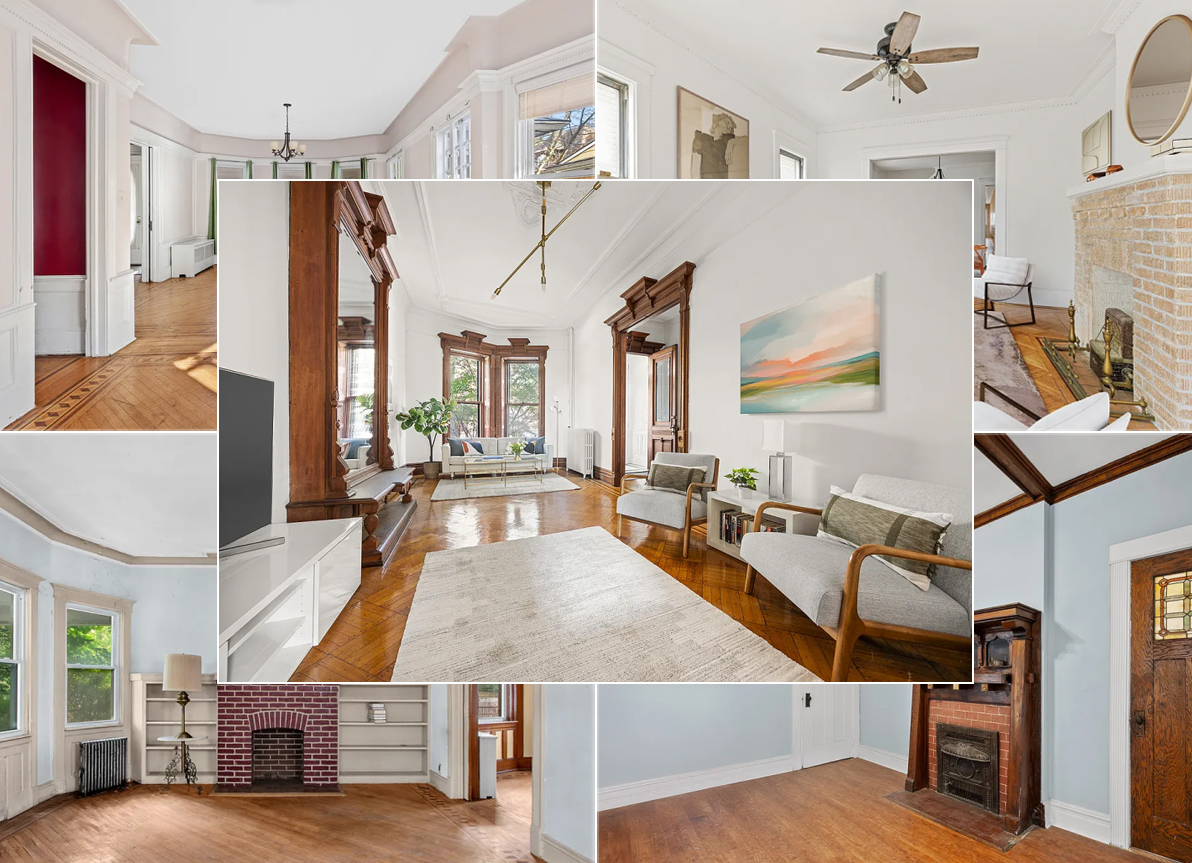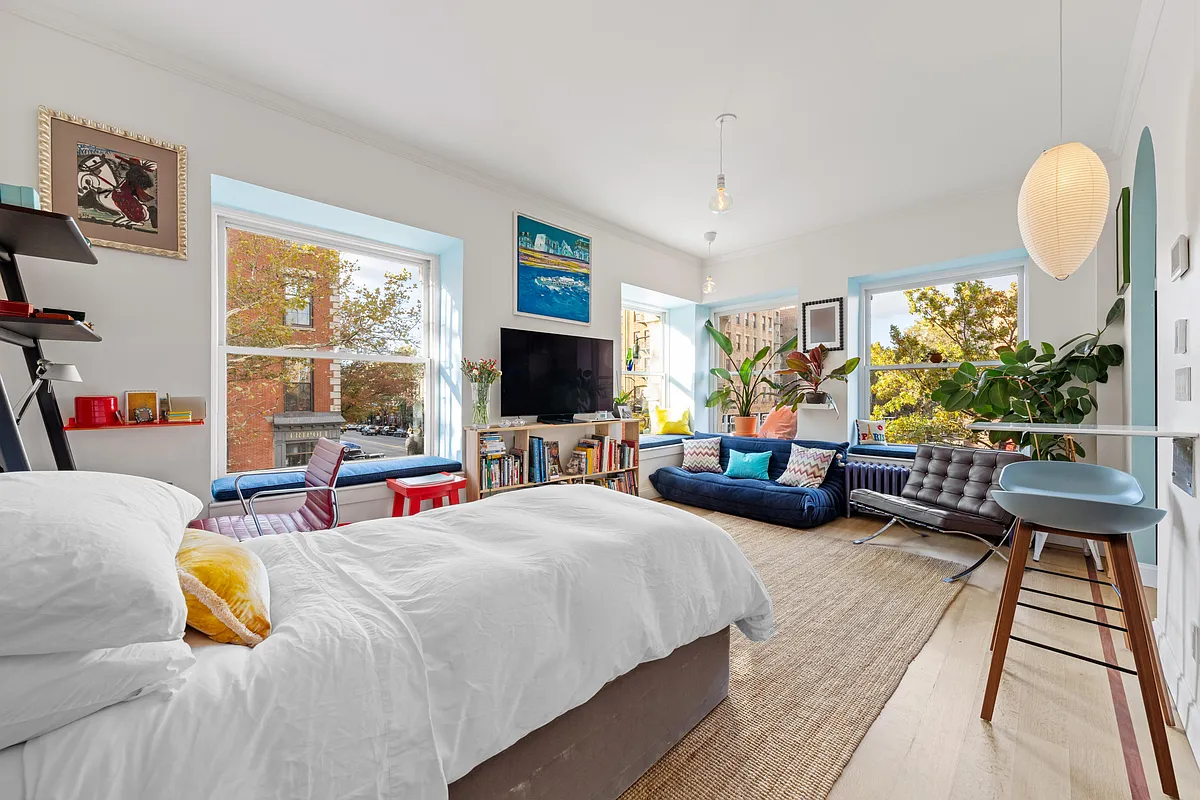News Flash: Everyone Wants to Live in the City
If you weren’t already convinced that city life is becoming increasingly preferable to suburban life, see this article in The New Republic, which looks at a trend called “demographic inversion”—a reversal of the white flight that helped hollow out the inner city beginning in the 1950s. The author quantifies what many Brooklynites already know: the…


If you weren’t already convinced that city life is becoming increasingly preferable to suburban life, see this article in The New Republic, which looks at a trend called “demographic inversion”—a reversal of the white flight that helped hollow out the inner city beginning in the 1950s. The author quantifies what many Brooklynites already know: the neighborhoods closest to vocational and cultural hubs (like, dare we say, Manhattan) and with shopping and services in walking distance are the most popular, forcing poorer folks to move further and further out. There’s been plenty of talk about the suburbs potentially turning into 21st century slums but what will 21st century cities look like if demographic inversion continues? “In the worst case, demographic inversion would result in the poor living out of sight and largely forgotten in some new kind of high-rise projects beyond the city border, with the wealthy huddled in gated enclaves in the center.”
Trading Places [The New Republic]
Beyond Gentrification [Curbed]
Photo by Daily Phototherapy.





Wasder:
You have to remember however that every government intervention has failed to produce a sufficient quantity of affordable housing.
pierre de taille:
Chicago really hasn’t seen “demographic inversion” despite what this article says. While Chicago has seen probably more high rise apartment house development than Manhattan, most of it has occurred in areas that previously were not particularly residential like River North. Chicago has never had the housing shortage problems like NY and SF because they never had rent control.
As a result, rents in older buildings are actually cheaper in many cases on an inflation adjusted basis than they were 10 years ago. In one neighborhood I lived in in college, I had a 1-bedroom apartment for $525 a month in 1998. Assuming a 3% per year increase, the rent should be about $700 a month today. Looking at craigslist, it seems the rent is more like $675 a month.
Absent this RE bubble and absurd urbanization hype, the cost to live in the suburbs = the cost to live in the city. It is not a financial dilemna unless you drive in the city or work in the suburbs.
wasder- absolutely.
1842;
I generally agree with what you say. I grew up in the city during the 70’s, and remember well exactly what you mean by a city “altogether dominated by poor and run down neighborhoods”. Moreover, I think the growth of Brownstone Brooklyn has been a great thing for the city, all things considered. The growth of a large, upper middle class has benefitted the city in many ways.
My concern is the diminshment of the middle class, and I think you’ve missed the mark on this one. The growth in immigrants has come at the expense of the lower middle and middle class in the city. How so? In this way: immigrants cannot go to the areas they once did, because of gentrification. Areas like the LES, Greenpoint and Williamsburg, formerly immigrant destinations, are increasingly out of the question. Where to go,then? The answer: areas like Sheepshead Bay, Gravesend and East Flatbush. What happens when they get there? Formerly one or two-family homes are chopped up into 6 unit buildings. I saw this with my own eyes in my previous neighborhood of Gravesend, which was previously a pleasant area of one or two family homes. Homes would get chopped up, making the area less desirable, and further pushing the remaining middle-class families out.
This is not meant as a knock against immigrants. It does speak to Polemecist’s point, however, that rent control is poisonous. For any developer to privately build low-income apartment houses in NYC is a suicide mission,with rent control in place. Someone mentioned developments like Avalon in downtown Brooklyn, but this is upscale rental housing. How many PRIVATE, low-income apartment buildings are being built, like Lefrak used to do 50 years ago? Answer: zero. They are only built if the city subsidizes them, which only increases taxes,driving more middle class folks away.
I think Governor Paterson is finally waking up to the reality that NY is in danger of entirely losing its middle class. Whether he actually does something about it is another story.
“As the city gets more crowded and the burbs get cheaper (e.g., NJ real estate is going down much faster than NYC), the burbs become more appealing.”
Perhaps suburban housing costs are falling, but transportation costs (and taxes) are high and growing. If you work in Manhattan, the suburbs are no panacea, both in terms of expense and time management. Besides, there are plenty of run-down areas in the suburbs. Who’s to say the choice won’t be (4) decent place in crappy suburban neighborhood?
I have no doubt about the trend of wealthier people moving/staying in urban enviroments as oppossed to moving out to the suburbs – but I do wonder how future generations of lower middle class and poor will be able to afford to live, maintain and find work living in today’s new McMansion communities.
I love the hysteria of those who scream rent control! rent control! without the first inkling of the fact that rent control is not only NOT expanding, but is decreasing. As are the number of units that are under rent stabilization. But there are those who still manage to toss it out like the guy who cries fire in a crowded theater.
“-the poor and immigrant communities also find NY atractive for other reasons: alot of entry-level service jobs,” “-the one demographic that is declining in NY is the working and lower middle class, ”
Poor people or immigrants with jobs are also “working?” Or that working and lower middle class needed cars because the MTA cared less about the outer boroughs than adding more lines in Manhattan so its residents wouldn’t have to walk their privileged butts so far. Needing cars is directly related to NYC’s Manhattan obsession. So now we have the great “clogging of the arteries” and you know what that does to a heart.
It’s not the poor and immigrant groups who are pushing us out. Its the people with wealth, who are overbuilding luxury housing, putting in boutique hotels, and high end retail, and by aggressive gentrification helping drive up RE prices. The middle and working class (many of them considered poor by definition) were the mainstay of the economy, putting far more into taxes they they got in return. Their jobs are disappearing for a lot of reasons – one of which is the more narrow focusing of the job market into fewer areas and types of jobs- leaving them with fewer work options.
Generations of them were renters- and it wasn’t a criteria of social snobbery as it is today. With the loss of rental units, and RE so high, they’re forced out even further.
“NYC is no longer attractive to these folks, who are in a very different situation than those in Brownstoner country. They don’t qualify for subsidies, can’t afford the new condos and find NY’s taxes and high prices to be suffocating.”
Yet people freak over the words rent control and rent stabilization, while decrying the loss of the working and middle class. I don’t notice you suggesting any remedy and it’s very obvious “market demand” is incapable of dealing with such complex situations. Let’s not blame just the politicians- we put them in office and the upper and wealthy classes have done whatever they could to get what they want at everyone else’s expense. Rent control is the least of the problem but if you’re so worried about keeping the working and middle classes maybe you should consider it.
Make My Heights:
The projects you cite actually prove the opposite of your conclusion. Almost every project you mentioned participates in some kind of HDC or HFA program or at the very least take a tax abatement.
Demand can never be met with these programs, especially now that the 421(a) exclusion zone pretty much covers every neighborhood in the city with high density zoning.
Well written 1842. And everybody really has had interesting things to say here. Fairly impressive for a Friday morning in August.
I think that there seems to be no doubt that an economic downturn is upon us and will be with us for some time. But this particular economic downturn is currently having a more adverse affect on suburbs than urban areas right now due to the rise in transportation costs. Whether this will continue in this manner is anyone’s guess. Oil prices could come down, or they could continue to skyrocket.
In re socioeconomic diversity, I would hope that our city government had a plan for how to retain residents of all strata of the economic ladder. Not necessarily holding my breath of course but a forward thinking city government could shape economic development with an eye towards keeping the mix in the city healthy and diverse. Tax breaks, BID development etc etc if used correctly could create healthy and diverse neighborhoods, no matter if the What thinks we can’t all get along.